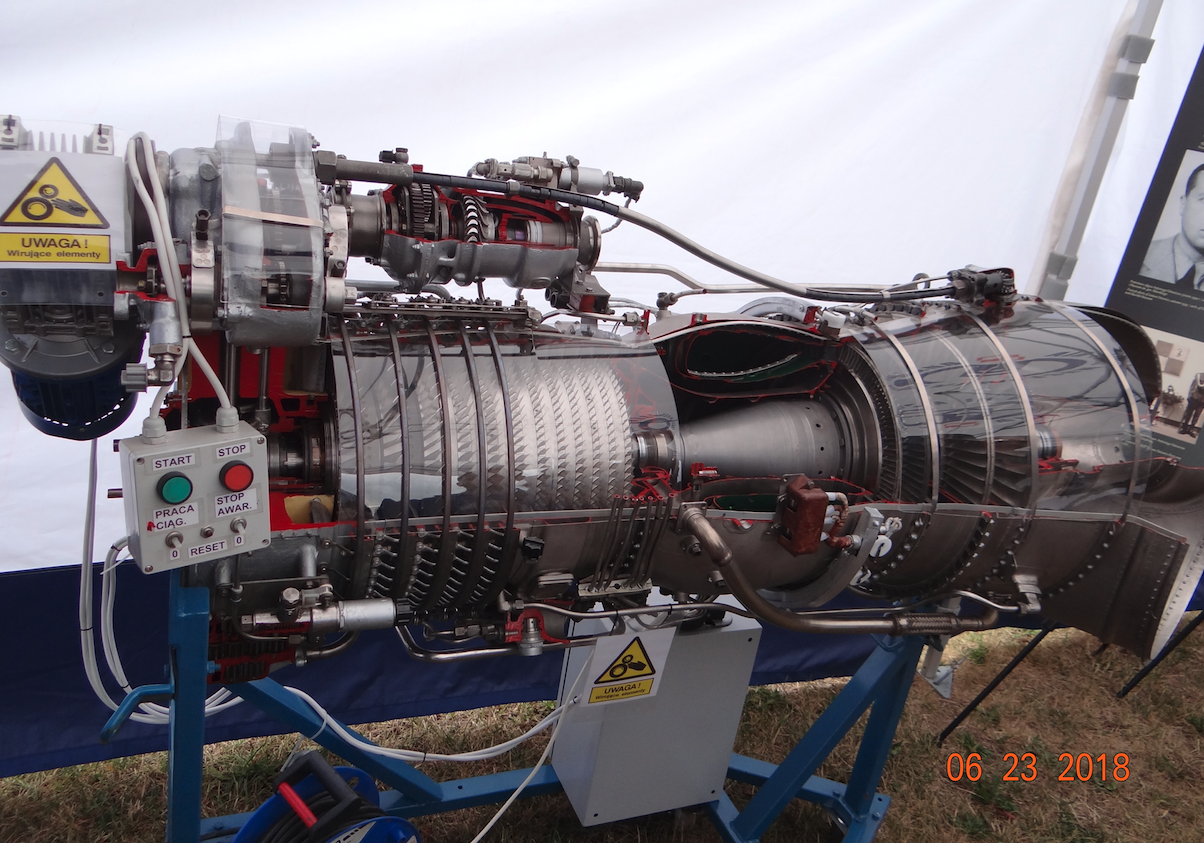Kraków 2022-12-09
TW2-117, TW3-117 turbine engine for the Mil Mi-8 helicopter.
The TW2-117A engine is a design specially developed for the Michał Mil Mi-8 helicopter. The engine was initially designated Sergei Izotov TW2-117, which was later changed to Vladimir Klimov TW2-117.



Sergei Petrovich Izotov (in Russian Сергей Петрович Изотов, 1917 - 1983), was a Soviet engineer and designer of aircraft engines. In 1934, he graduated from a technical school. He moved to Leningrad, where in 1941 he graduated from the Leningrad Polytechnic Institute. He was a member of the Communist Party of the Soviet Union (CPSU). From 1941, he worked at the factory No. 451 as an engineer-constructor in the design office of Vladimir Klimov. At that time, the office was evacuated to Ufa. Sergey Izotov worked on engines for frontline aviation, for Yakovlev, Lavochkin, and Petlakov aircraft. In 1946, the OKB-117 Experimental Design Bureau was established, where Sergey Izotov became Vladimir Klinov's deputy. Sergei Izotov was tasked with copying the German Junkers Jumo-004 turbojet engine. This is how the Vladimir Klimov RD-10 engine was created, which was used in several aircraft constructions. They were mainly experimental aircraft. Serial RD-10 engines were installed in Jak-15 and Jak-17 aircraft. Then the OKB-117 office was tasked with copying British turbojet engines, and this is how the Vladimir Klimov WK-1 engine was created, which was installed in the Mikoyan and Gurevich MiG-15 bis, Ilyushin Il-28 and many experimental designs. When in 1960, Vladimir Klimov finished his work, then Sergei Izotov became his successor as the chief designer of OKB-117 and director of the state machine factory No. 117, which in 1963 was named after Klimov. From 1958, OKB-117 worked on turbine engines for the Michał Mil Mi-8 helicopter. This is how the TW2-117 engine was created, where the number 117 means the design office OKB-117.
The TW2-117 engine is a so-called engine with a free turbine, from which the power is transferred to the final drive. It was designed and built in the early 1960s. Serial production ran from 1962 to 1997. About 23,000 TW2-117 engines were built.
The TW2-117 engine has a 10-stage axial compressor, an eight-jug combustion chamber, a 2-stage turbine and a 2-stage free turbine that is mechanically connected to the WR-8 final drive. The OKB-117 office also developed a new WR-8 final drive, to which two engines were connected. A new 5-bladed main rotor was also developed.
The TW2-117 engine had similar power to the Western designs, but was heavier and consumed more fuel. However, it must be remembered that this engine was incomparably lighter than the ASz-82 W piston engine that powered the Mil Mi-4 helicopter, with a similar maximum power of 1,250 kW (1,699.53 HP). The engines weighed 900 kg and 335 kg, respectively. Szewcowa's ASz-82 engine is a double, 14-cylinder star. It is a 4-stroke, air-cooled engine with a maximum power of 1,700 hp for the FN version. Engine capacity is 41.21 liters. Engine weight depending on the version 860 - 900 kg.
Data T-T engine TW2-117:
Length 2.835 m, weight without accessories 335 kg. 6.6:1 air compression at 21,000 rpm. TW2-117A with 1,104 kW (1,501.02 hp). TW2-117AG with 1,250 kW (1,699.53 hp).
TW3-117 engine.
The TW3-117 engine is a distant upgrade of the TW2-117 engine. Its first launch took place in 1974. Its production continues. To date (2018), approximately 25,000 TW3-117 engines have been built. These engines, apart from the Mi-14, Mi-17 and Mi-24 helicopters, are used in many Klimow helicopters. 95% of the helicopters currently built in the Moscow state are fitted with TW3-117 engines.
Data T-T engine TW3-117:
Length 2.055 m. Diameter 0.728 m. Weight without accessories 294 kg. 9.4:1 air compression at 21,000 rpm. The air flow through the motor is 8.7 kg/s. The temperature in front of the turbine is 920-990 degrees Celsius. TW3-117 rated at 1,397 kW (1,900 hp) - 1,417 kW (1,927 hp). The 1,641 kW (2,200 hp) TW3-117MT is an extraordinary power.
The TW3-117WM is a version designed for high altitude and hot climate operations. Work on the engine started when the Moscow army entered Afghanistan in 1979. The tem engine has a power of 2,200 hp, which is the same as the TW3-117MT, but at an altitude of 1,000 m above sea level, at a temperature of 40 degrees Celsius, it gives 1,268 kW (1,700 hp), while the TW3-117MT engine is only 1,059 kW (1,420 hp).
Engine WK-2500.
In 2020, the Moscow state reported that it had produced 230 TW3-117 and WK-2500 engines, and in 2021, 300 engines were built. The engines are manufactured by the ODK-Klimow concern. The WK-2500 is a development version of the TW3-117WMA engine, developed in 2001 for the Ka-50 helicopter. WK-2500 engines are now installed in all newly produced helicopters that were previously adapted to the TW3-117. The WK-2500 has a digital control system (Eliektronno-Cifrovaya Sistiema Uprawlenija Dwigatielem, in English FADEC), a maximum power of 1,987 kW (2,700 hp), an overhaul period of 2,000 - 3,000 hours and a service life of 6,000 - 9,000 hours. The WK-2500 engine is also intended for the Mi-28 attack helicopters.
It should be remembered that until the aggression of the Moscow state against Ukraine in 2014, all engines for Moscow helicopters were produced in Ukraine. After that date, Moscow acquired the engines in a roundabout way through Belarus. In the end, Muscovites were forced to produce on their own. Almost all Moscow helicopters are powered by Klimow TW3-117 or Klimow WK-2500 engines (or their weaker variants): Mi-8, Mi-17, Mi-24, Mi-35, Ka-50, Ka-52. Moscow itself also exports the WK-2500 engines to China.
Written by Karol Placha Hetman
